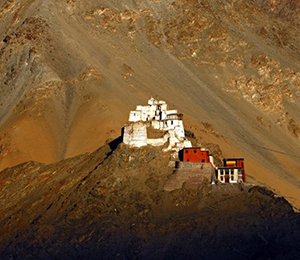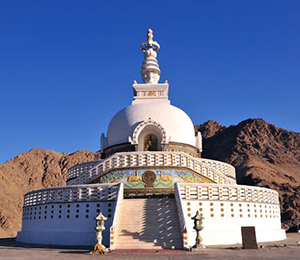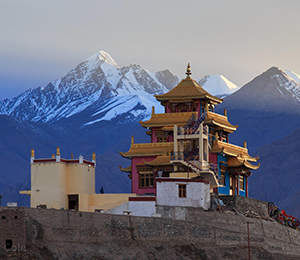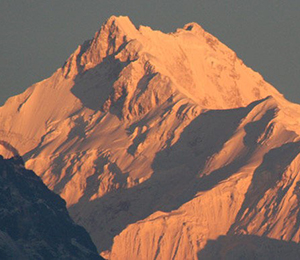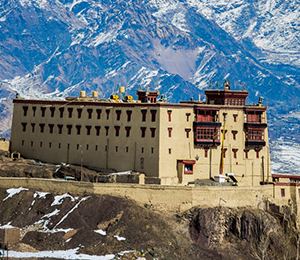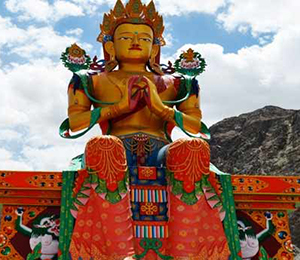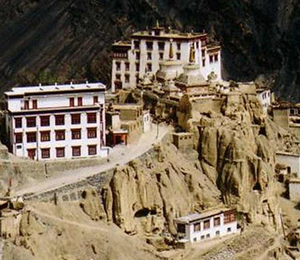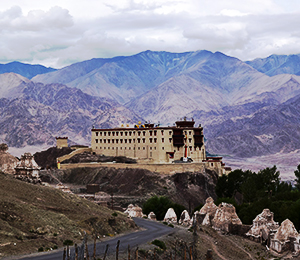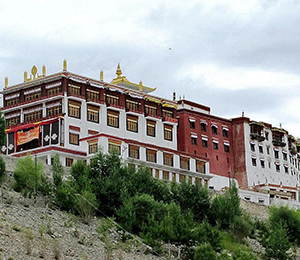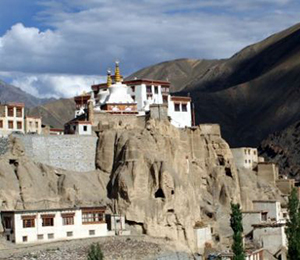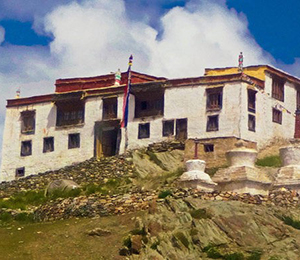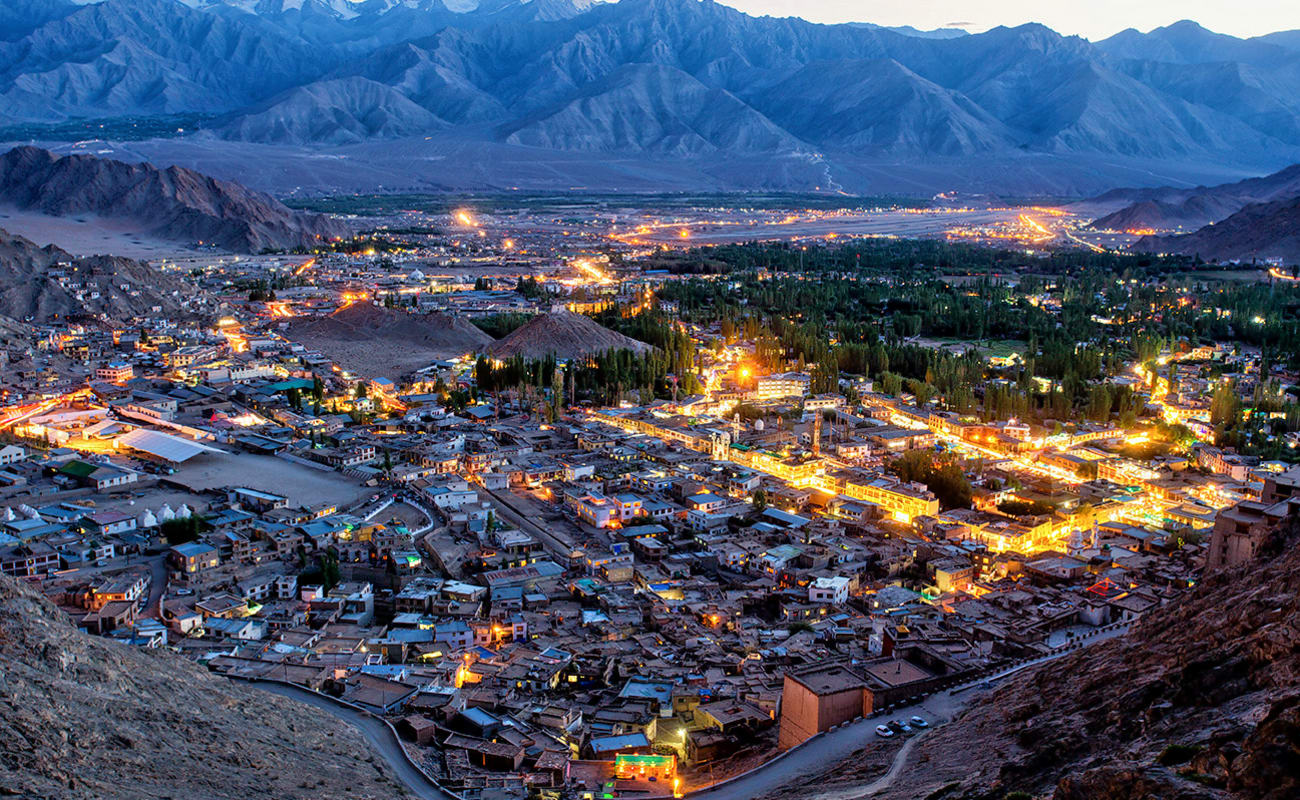
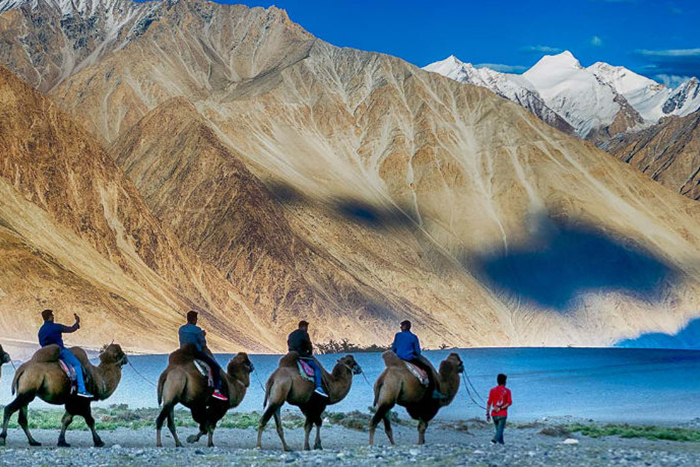
Flying into Leh, the cold desert land, over the magnificent Himalayas is a beautiful and scary experience at once. Leh Palace illuminated by huge halogen lamps looks like a bewitching castle on a hilltop set ablaze in the dark nights of the Leh. Drive in the city is as exciting as the wonders it has in its lap with the long isolated winding road that opens up into a sheer expanse of arid flatness in burnt sienna. There is blinding sun at the top and perhaps at the first impression, a visitor is not likely to appreciate the blessings of the land fully.
A historic town that served as the royal capital of the Old Kingdom, Leh boasts of a nine-storey palace built by King Singge Namgyol in 17 century. It is a miniature replica of Patala Palace in Lhasa. The ruins of Leh palace overlooks the entire city of Leh and the Indus valley and signifies Ladakhs rich heritage.
Above the palace is the Namgyol Tsemo (Red temple). The ruins of Tsemo Gompa (victory palace) a part of the earliest royal residence built by King. Tashi Namgyal in the 16th century. The associated temples are kept locked except during the morning and evening hours, when monks from Sankar Gompa climb the hill to light the butter-lamps placed in front of the images.
The Fort Road follows to Skara, another pretty and prosperous suburb of Leh town, and one can admire the earthen ramparts of Zorawar Singh’s fort, now housing army barracks.
Bon and Buddhism rule the lifestyle and culture of the people here. The Chortens (Stupas) and enchanting Gompas (Monasteries) adorn the city with their presence. The landscape is breathtakingly beautiful and there is an ominous beauty in the stark surroundings of Ladakh. The Hinayana Buddhist way of life lends a benevolent spirit to the very air of the region.
Kashmir is displaying their beautiful carpets and rugs adorned with a mixture of Kashmiri and Persian motifs dominate the shopping areas. There are a number of German bakeries in Leh to cater to European tastes. Special Tibetan refugee markets are the other dominant shopping centers in Leh. The turquoise from Tibet, the rubies from Burma and the Lapis Lazuli from Afghanistan along with the native Thangka paintings make up a shopping buff's day. T-shirts with 'Free Tibet' printed in them and painted masks and jewellery made from semi-precious stones or fake stones are other attractions.
Metal ware is the Tibetan specialty as is the quartz that comes all the way from South India, which seems a little strange. Silverware, cymbals with special religious motifs that are used during meditation, decorative copper and brass trumpets, and sonorous bowls made of nine metals like cymbals, chunky shell bangles worn by Ladakhi women and exquisite unpolished turquoise and silver jewelry are some of the highlights of the place.
In summers, light cotton clothes are advisable while you will need heavy woolen clothes in winters. Wind-sheeters or raincoats as a safety against rainfall or snowfall and good waterproof shoes are needed while trekking. A warm sleeping bag will be an added advantage.
Accommodation in and around available with different category hotels which have tariffs ranging from Rs.1500 to Rs.2970 approximately which includes the meals mostly. Guest Houses in Leh are well maintained by the local people which are quite economical for the stay.The tariff ranges from Rs. 100 to Rs. 1000.
All hotels and most of the guest houses have in houses restaurants where all type of continental, Indian, Ladakhi and Tibetian food is provided. The restaurants and cafes in the main market around Palace on Zangsti, Changspa and old fort road provide most delicious food for international and domestic tourists as per their choice.
Kashmir is displaying their beautiful carpets and rugs adorned with a mixture of Kashmiri and Persian motifs dominate the shopping areas. There are a number of German bakeries in Leh to cater to European tastes. Special Tibetan refugee markets are the other dominant shopping centers in Leh. The turquoise from Tibet, the rubies from Burma and the Lapis Lazuli from Afghanistan along with the native Thangka paintings make up a shopping buff's day. T-shirts with 'Free Tibet' printed in them and painted masks and jewellery made from semi-precious stones or fake stones are other attractions.
Metal ware is the Tibetan specialty as is the quartz that comes all the way from South India, which seems a little strange. Silverware, cymbals with special religious motifs that are used during meditation, decorative copper and brass trumpets, and sonorous bowls made of nine metals like cymbals, chunky shell bangles worn by Ladakhi women and exquisite unpolished turquoise and silver jewelry are some of the highlights of the place.
Leh is connected by the regular domestic flights to and from Delhi. However, as the weather is unpredictable, 2 to 3 hrs. Hold-up is normal, especially on the early morning departures.
The nearest railway station is in Kalka from where has to take a bus or taxi to Manali via Shimla. There are regular Tata Sumo and bus services in Manali to and from Leh.
Long, winding but well maintained roads are the next best option to a flight for Leh. The two popular routes to Leh are from Srinagar via Kargil on the Srinagar-Leh Highway and from Manali via Sarchu and Dharchu on the Manali-Leh Highway. These routes are only open from June to October.
However, it is a long and tiering journey of two days, the only comforts being the spectacular sights of the mountain country, alluring blue rivers and the passes over 13,000 ft. that takes us to our destination. The respective night halts on the two routes are Kargil and Sarchu. There are regular bus and Tata Sumo services to Leh. Leh Bus Stand is barely a kilometer from the city itself.
